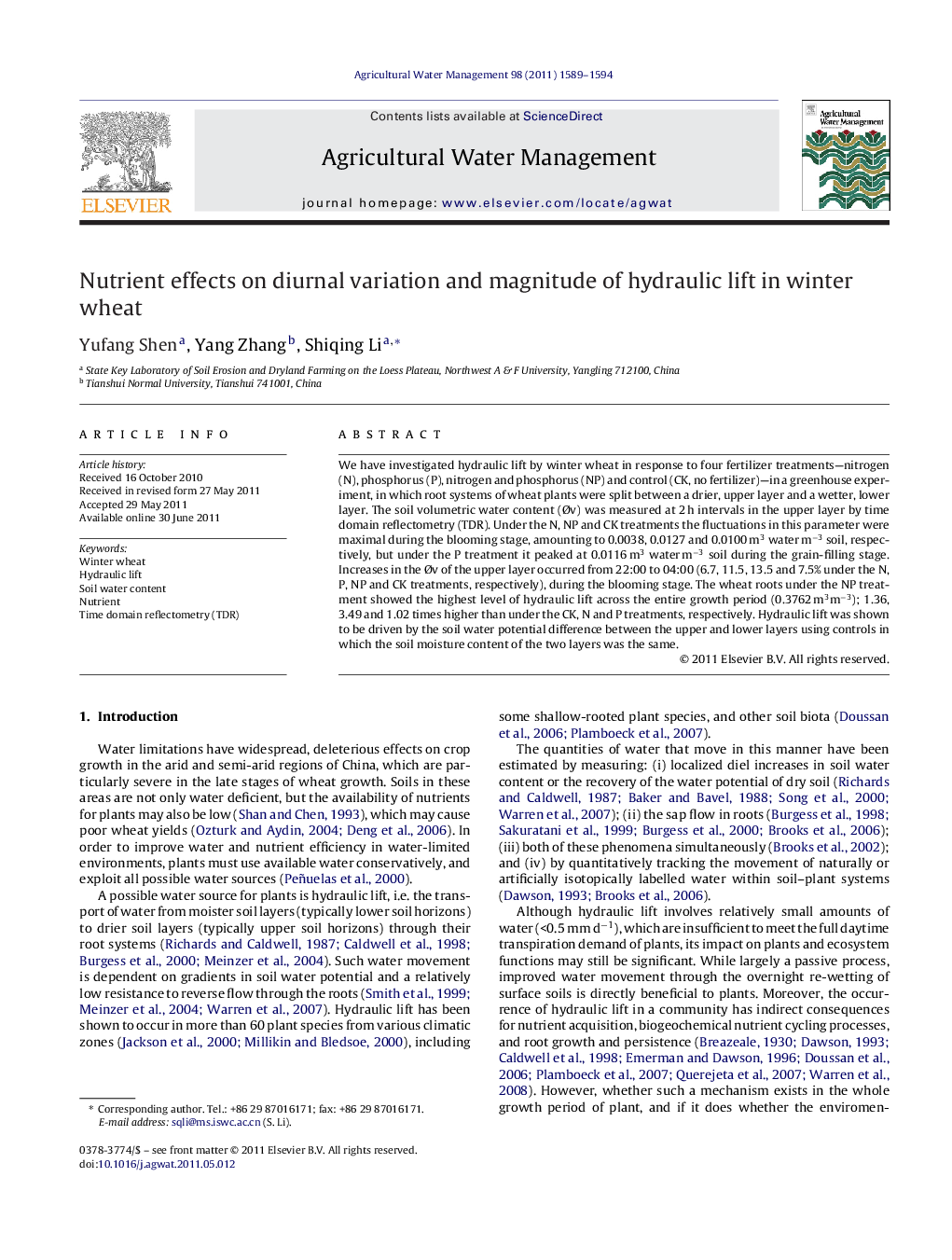| Article ID | Journal | Published Year | Pages | File Type |
|---|---|---|---|---|
| 4479331 | Agricultural Water Management | 2011 | 6 Pages |
We have investigated hydraulic lift by winter wheat in response to four fertilizer treatments—nitrogen (N), phosphorus (P), nitrogen and phosphorus (NP) and control (CK, no fertilizer)—in a greenhouse experiment, in which root systems of wheat plants were split between a drier, upper layer and a wetter, lower layer. The soil volumetric water content (Øv) was measured at 2 h intervals in the upper layer by time domain reflectometry (TDR). Under the N, NP and CK treatments the fluctuations in this parameter were maximal during the blooming stage, amounting to 0.0038, 0.0127 and 0.0100 m3 water m−3 soil, respectively, but under the P treatment it peaked at 0.0116 m3 water m−3 soil during the grain-filling stage. Increases in the Øv of the upper layer occurred from 22:00 to 04:00 (6.7, 11.5, 13.5 and 7.5% under the N, P, NP and CK treatments, respectively), during the blooming stage. The wheat roots under the NP treatment showed the highest level of hydraulic lift across the entire growth period (0.3762 m3m−3); 1.36, 3.49 and 1.02 times higher than under the CK, N and P treatments, respectively. Hydraulic lift was shown to be driven by the soil water potential difference between the upper and lower layers using controls in which the soil moisture content of the two layers was the same.
► We studied water hydraulic lift of winter wheat for different nutrient availability. ► The maximal hydraulic fluctuations appeared in the blooming stage for most treatments. ► The hydraulic lift were showed the highest for NP treatment in whole growth stage. ► Hydraulic lift was driven by difference of upper and lower soil water potential.
